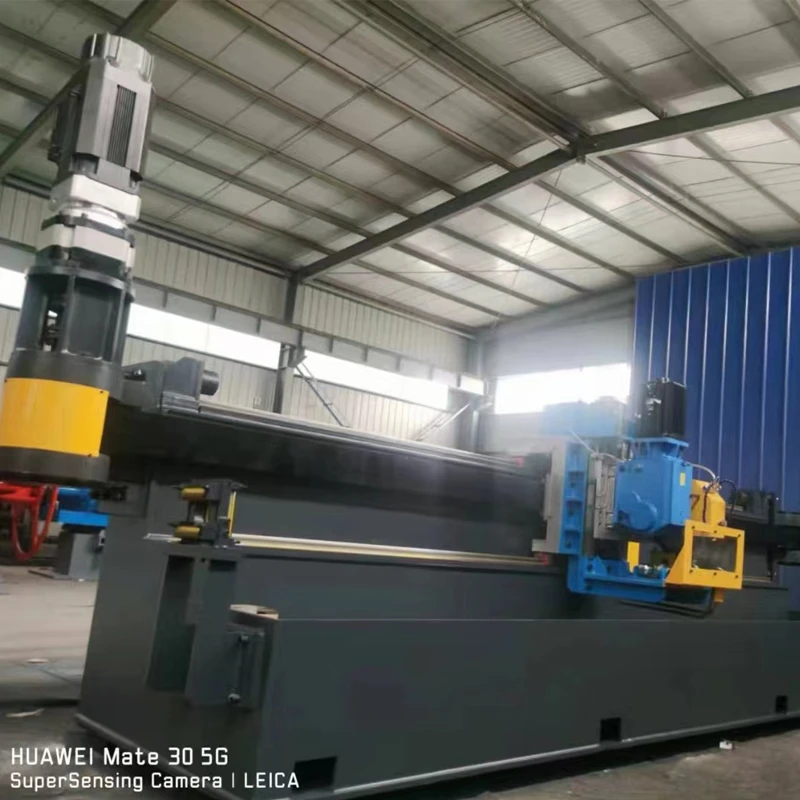portable roll forming machine
Portable Roll Forming Machines Revolutionizing Metal Fabrication
In the ever-evolving landscape of metal fabrication, the demand for efficiency, quality, and versatility is higher than ever. Among the innovations that are transforming the industry, portable roll forming machines have emerged as a game-changer. These compact, mobile units enable manufacturers to produce various metal profiles on-site, saving time and costs. This article explores the benefits, applications, and technological advancements of portable roll forming machines.
Understanding Portable Roll Forming Machines
Roll forming is a continuous bending operation in which a long strip of metal is passed through a series of rollers to create desired shapes. Traditionally, this process required stationary machines located in large manufacturing facilities. However, the introduction of portable roll forming machines has brought this technology directly to the construction sites, drastically improving operational capabilities.
Portable roll forming machines are designed for easy transport and setup, often featuring lightweight materials and compact designs. They can produce a variety of profiles, including roofing panels, wall cladding, and structural components, all tailored to meet specific project needs.
Key Benefits
1. On-Site Production One of the most significant advantages of portable roll forming machines is their ability to produce metal profiles on-site. This capability eliminates the need for transporting bulky materials from a factory, reducing logistical costs and lead times. Consequently, projects can be completed faster, without the delays associated with traditional manufacturing processes.
2. Cost Efficiency By minimizing waste and reducing shipping expenses, portable roll forming machines contribute to cost savings. Additionally, they offer the flexibility to respond to project changes on the fly, allowing for adjustments in profiles without incurring new material expenses.
3. Versatility Portable machines can form a wide range of shapes and sizes, accommodating various project requirements. Whether producing custom lengths or adapting designs for unique applications, these machines can efficiently handle diverse tasks.
4. Quality Control On-site roll forming allows for immediate quality checks, ensuring that the profiles meet the required tolerances and specifications. This real-time feedback loop helps to maintain high-quality standards and reduces the likelihood of defects.
portable roll forming machine

5. Reduced Labor Needs With advancements in automation, many portable roll forming machines require fewer operators, thus streamlining the production process. Operators can efficiently manage the machine while simultaneously handling other project tasks, enhancing overall productivity.
Applications Across Industries
The applications of portable roll forming machines span multiple industries, including construction, telecommunications, and automotive sectors. In construction, these machines are often employed to manufacture roofing and siding panels, metal studs, and other structural elements tailored to the specific dimensions of a building project.
In the telecommunications industry, roll forming is used to create brackets and mounts for antennas and conduits. The automotive sector leverages portable roll forming for producing various components, from chassis parts to trim pieces, necessitating precision and durability.
Technological Advancements
Recent technological advancements have significantly enhanced the capabilities of portable roll forming machines. Modern units are equipped with advanced software for design and programming, allowing operators to input specifications quickly. Additionally, innovations in materials and energy efficiency have improved the performance of these machines, enabling them to run faster and produce high-quality outputs.
Furthermore, some machines are now designed to operate with renewable energy sources, reducing the carbon footprint associated with metal fabrication. As sustainability becomes a priority for many industries, these eco-friendly options are gaining traction.
Conclusion
Portable roll forming machines represent a significant leap forward in the realm of metal fabrication. Their ability to produce high-quality, custom profiles on-site revolutionizes project execution, offering remarkable efficiency and cost-effectiveness. As industries continue to adapt to changing demands, portable roll forming technology will undoubtedly play a crucial role in shaping the future of manufacturing. The combination of versatility, quality control, and reduced lead times makes these machines an invaluable asset for manufacturers and contractors alike.
-
High Frequency Straight Seam Welded Pipe Production Line-BzZhou Xinghua Machinery Equipment Manufacturing Co., LTD.|line pipe steel&welded gas pipeNewsJul.30,2025
-
High Frequency Straight Seam Welded Pipe Production Line-BzZhou Xinghua Machinery Equipment Manufacturing Co., LTD.|High Precision&Automated SolutionsNewsJul.30,2025
-
High Frequency Straight Seam Welded Pipe Production Line - BzZhou Xinghua Machinery Equipment Manufacturing Co., Ltd.NewsJul.30,2025
-
High Frequency Straight Seam Welded Pipe Production Line-BzZhou Xinghua Machinery Equipment Manufacturing Co., LTD.|Precision Welding, High EfficiencyNewsJul.30,2025
-
High Frequency Straight Seam Welded Pipe Production Line|BzZhou Xinghua|Precision Welding&EfficiencyNewsJul.30,2025
-
High Frequency Straight Seam Welded Pipe Production Line - BzZhou Xinghua|Precision Engineering&EfficiencyNewsJul.30,2025


